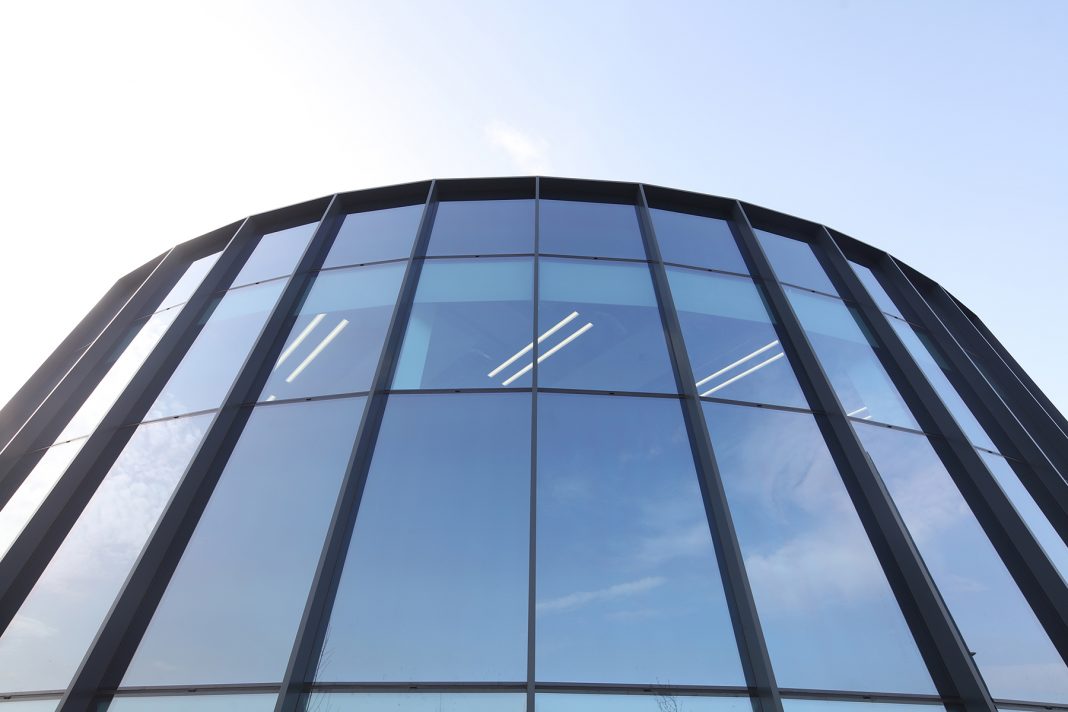The choice of a sustainable façade system from Technal, using a high proportion of recycled aluminium helped the University of Bath’s new automotive propulsion research facility in Bristol, to achieve BREEAM Very Good standard.
The front elevation façade of the 11,464 m2, two-storey Institute for Advanced Automotive Propulsion Systems building features Technal curtain wall, which is manufactured using Hydro Circal 75R recycled aluminium made with at least 75% recycled post-consumer scrap aluminium.
Stride Treglown Project Architect, Victor Martos, explained: “Originally, we had specified another system but switched to Technal as it uses Circal recycled aluminium and Reduxa low-carbon aluminium, which makes the system very attractive for buildings such as IAAPS that target a high level of environmental performance.”
Fabricated and installed by Bristol-based Architectural Aluminium and Glass Ltd (AAAG) to a planned eight-week delivery programme, the curtain walling combines a linear and an arc section on plan to create a faceted façade that runs 43m and is 10m high. The double-height curtain wall joins the rectangular arched entrance at a sliced angle.
Victor Martos continued: “Aesthetically, it was important for us to highlight the vertical joints over the horizontal joints so as to emphasise the height of the glazing and maintain the architectural proportions with the main entrance arch alongside. The TECHNAL curtain walling system allowed us to achieve this. It is very flexible in terms of the design options for mullions and transoms.”
Vertically, the curtain wall mullions have an additional capping piece or “fin” finished in an Anthracite Grey powder coating (RAL 7016). This extends 200mm beyond and goes all the way from the base to the head of the curtain wall, creating a vertical trame design. On the horizontal, SSG silicone sealant transom joints offer a seamless look. “The fact that the external fins could be self-supported without the need of additional structure or ties was fundamental to achieving the desired verticality,” added Victor.
AAAG Bristol Estimating Manager Richard Flicker detailed how the façade was constructed: “Each vertical height section is split into four panels, which alternate between vision glass and lookalike, opaque spandrel panels to conceal the M&E services behind.”
The glass specification is continuous to maintain the same level of reflection and uniformity across the entire curtain wall. It also had to meet thermal requirements, as Richard explains: “Thermally, the façade had to achieve low heat gains through the façade, which meant careful glass specification.
“Following numerous calculations and close discussion between myself and the construction team, Saint Gobain Cool-Lite SKN 154 solar control glass was selected. This offers a low G Factor (0.28) and helps control the amount of heat that penetrates into the building by reflecting it back to the outside.”












